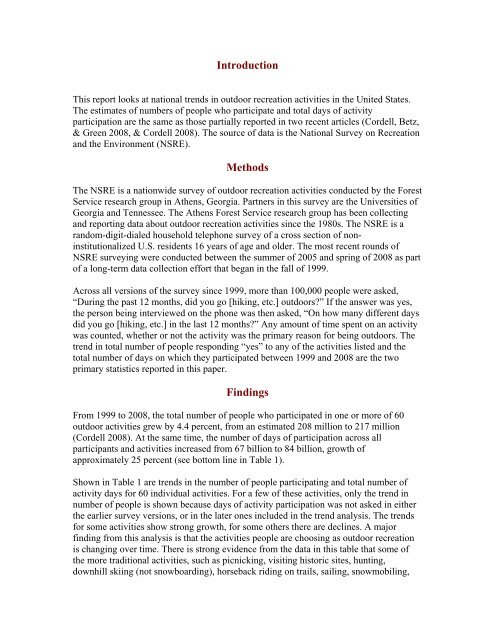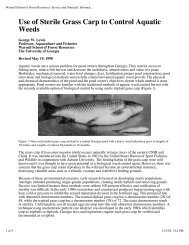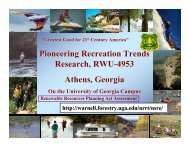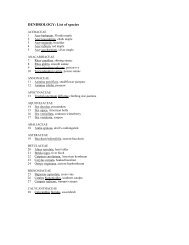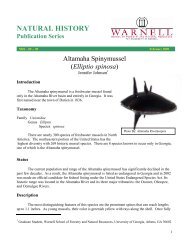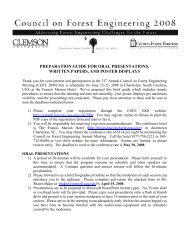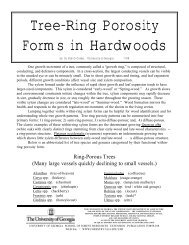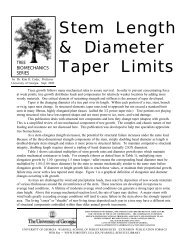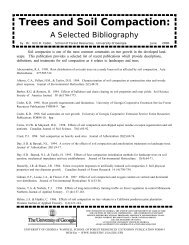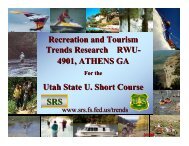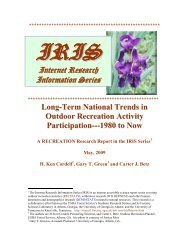Outdoor Recreation Activity Trends - University of Georgia
Outdoor Recreation Activity Trends - University of Georgia
Outdoor Recreation Activity Trends - University of Georgia
You also want an ePaper? Increase the reach of your titles
YUMPU automatically turns print PDFs into web optimized ePapers that Google loves.
IntroductionThis report looks at national trends in outdoor recreation activities in the United States.The estimates <strong>of</strong> numbers <strong>of</strong> people who participate and total days <strong>of</strong> activityparticipation are the same as those partially reported in two recent articles (Cordell, Betz,& Green 2008, & Cordell 2008). The source <strong>of</strong> data is the National Survey on <strong>Recreation</strong>and the Environment (NSRE).MethodsThe NSRE is a nationwide survey <strong>of</strong> outdoor recreation activities conducted by the ForestService research group in Athens, <strong>Georgia</strong>. Partners in this survey are the Universities <strong>of</strong><strong>Georgia</strong> and Tennessee. The Athens Forest Service research group has been collectingand reporting data about outdoor recreation activities since the 1980s. The NSRE is arandom-digit-dialed household telephone survey <strong>of</strong> a cross section <strong>of</strong> noninstitutionalizedU.S. residents 16 years <strong>of</strong> age and older. The most recent rounds <strong>of</strong>NSRE surveying were conducted between the summer <strong>of</strong> 2005 and spring <strong>of</strong> 2008 as part<strong>of</strong> a long-term data collection effort that began in the fall <strong>of</strong> 1999.Across all versions <strong>of</strong> the survey since 1999, more than 100,000 people were asked,“During the past 12 months, did you go [hiking, etc.] outdoors?” If the answer was yes,the person being interviewed on the phone was then asked, “On how many different daysdid you go [hiking, etc.] in the last 12 months?” Any amount <strong>of</strong> time spent on an activitywas counted, whether or not the activity was the primary reason for being outdoors. Thetrend in total number <strong>of</strong> people responding “yes” to any <strong>of</strong> the activities listed and thetotal number <strong>of</strong> days on which they participated between 1999 and 2008 are the twoprimary statistics reported in this paper.FindingsFrom 1999 to 2008, the total number <strong>of</strong> people who participated in one or more <strong>of</strong> 60outdoor activities grew by 4.4 percent, from an estimated 208 million to 217 million(Cordell 2008). At the same time, the number <strong>of</strong> days <strong>of</strong> participation across allparticipants and activities increased from 67 billion to 84 billion, growth <strong>of</strong>approximately 25 percent (see bottom line in Table 1).Shown in Table 1 are trends in the number <strong>of</strong> people participating and total number <strong>of</strong>activity days for 60 individual activities. For a few <strong>of</strong> these activities, only the trend innumber <strong>of</strong> people is shown because days <strong>of</strong> activity participation was not asked in eitherthe earlier survey versions, or in the later ones included in the trend analysis. The trendsfor some activities show strong growth, for some others there are declines. A majorfinding from this analysis is that the activities people are choosing as outdoor recreationis changing over time. There is strong evidence from the data in this table that some <strong>of</strong>the more traditional activities, such as picnicking, visiting historic sites, hunting,downhill skiing (not snowboarding), horseback riding on trails, sailing, snowmobiling,


